The Abby’s Ohana Tea Story
How We Got Started
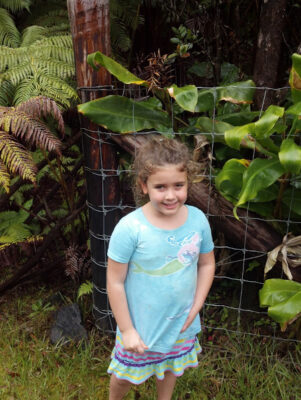
Growing up in the United Kingdom you can say that tea was in my blood. The kettle was the first thing that was switched on in the morning and tea was usually the last thing brewed at night while the family settled in to watch Coronation Street or The Two Ronnies.
Actually tea brings back some of the earliest memories for me. Each morning as my mom and dad went off to work, I would visit my grandparents for breakfast before hurrying off to school. These very first breakfasts always consisted of me climbing onto my grandfather’s lap to drink his sweet, milky tea before he headed out the door for another day of bricklaying.
As the years passed I naturally migrated from drinking tea as a sweet breakfast treat to drinking tea for myself. This time it was without the sugar and with just the smallest amount of milk to cut the astringency of the traditional CTC Indian Tea. This is the tea that fortified everyone up and down the length and breadth of the UK and warmed them up before heading out on bone chilling mornings whether to school or to work.
 Coming to the heartland of America, the greatest shock to the system was not driving on the right-hand side of the road, but the fact that practically everyone drank coffee. Good old-fashioned British Tea was nowhere to be found except in specialty stores in New York, Chicago and LA, and I was a thousand miles from any of them. What was a British boy to do?
Coming to the heartland of America, the greatest shock to the system was not driving on the right-hand side of the road, but the fact that practically everyone drank coffee. Good old-fashioned British Tea was nowhere to be found except in specialty stores in New York, Chicago and LA, and I was a thousand miles from any of them. What was a British boy to do?
Eventually through life’s twists and turns our family moved to Hawai‘i and here we were a mere 100 miles from the greatest coffee in the world! What was a tea boy to do? Thankfully there was a visionary in Hawai‘i called Dr. Francis Zee who saw the potential of tea in Hawai‘i. He saw how certain cultivars that had been developed in East Asia and the Indian sub-continent could be grown successfully on the windward slopes of Hawai‘i Island, how the terroir of Hawai‘i was ideally suited to grow Camellia sinensis to produce some fabulous tasting tea.
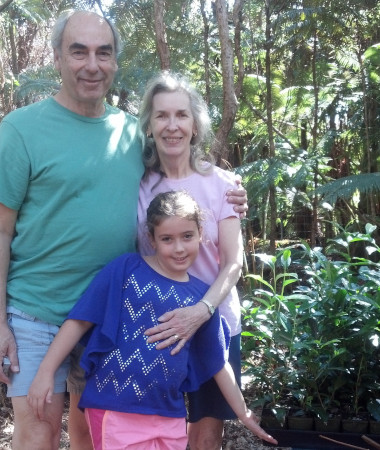
On a trip to Disneyland in 2012 with Abby’s grandparents, Grandpa Ray and Grandma Teresa, a plan was hatched. We would carve a tea farm out of a small portion of Hawai‘i’s tropical rainforest in the village of Volcano. We decided that the ‘Ōhi‘a lehua (Metrosideros polymorpha), Hawai‘i’s native keystone tree must be preserved at all cost along with the ‘Ama‘u ferns, Hāpu‘u tree ferns, and Palapalai ferns, that dotted the understory. Unfortunately these most important native trees and ferns were smothered in a thick choking blanket of Uluhe fern.
Therefore, we slowly hand cleared the Uluhe, letting light penetrate down to the ground for maybe the first time in a few hundred years since the last time Kīlauea covered the landscape in a layer of pāhoehoe lava. Nothing went to waste as the Uluhe was used to create new soil and bulk up the naturally acidic fertile soil that had been built up over the centuries from the leaves the ‘Ōhi‘a had dropped onto the weathered rock beneath.
Clones of our varieties were purchased from a wonderful local grower and were planted over the next two years with the last tea plants going into the ground in late 2015. We worked through the sun and the wind and the rain to prepare the soil for the first planting and in February 2014, the first Benikaori cultivar clones were planted at Abby’s Ohana Tea. It was a momentous occasion, to think in two short years an idea first brought to light at Disneyland was now becoming a reality in the volcanic soil of East Hawai‘i.
Since then the tea has been fed with only the finest organic fertilizer with a mixture of harvested finely ground mature fern fronds and organic crumbles. Simultaneously, we at Abby’s Ohana Tea learned how to make quality tea from the buds we picked in the spring, summer and autumnal flushes.


We soldiered on through 2018 as Kīlauea did its shake, rattle and roll through the largest eruption in living history. A mere two miles away as the crow flies the summit erupted. Whether pruning the tea, feeding the tea, weeding or picking, the ground continually shook for a few months that summer as the summit crater, Halema‘uma‘u collapsed as lava drained and then erupted along the lower east rift zone. We noticed how different varieties reacted to the day to day changes in the air quality, but thankfully the teas came through like troopers and stronger than ever as they continued to thrive and grow vigorously in the fertile, acidic volcanic soil.
It has truly been an adventure as a few of us small farmers have turned our eyes to cultivating tea, watching our tea clones mature into tea bushes. How we have learned through listening, watching, trial and error and finally finding the best practices to use in making our green, oolong and black tea here in Hawai‘i.
Today, looking back over this past decade, we can finally see the dream coming to fruition as we at Abby’s Ohana Tea are in the position to offer the highest quality tea to people who enjoy drinking whole leaf, unbroken, single cultivar tea.
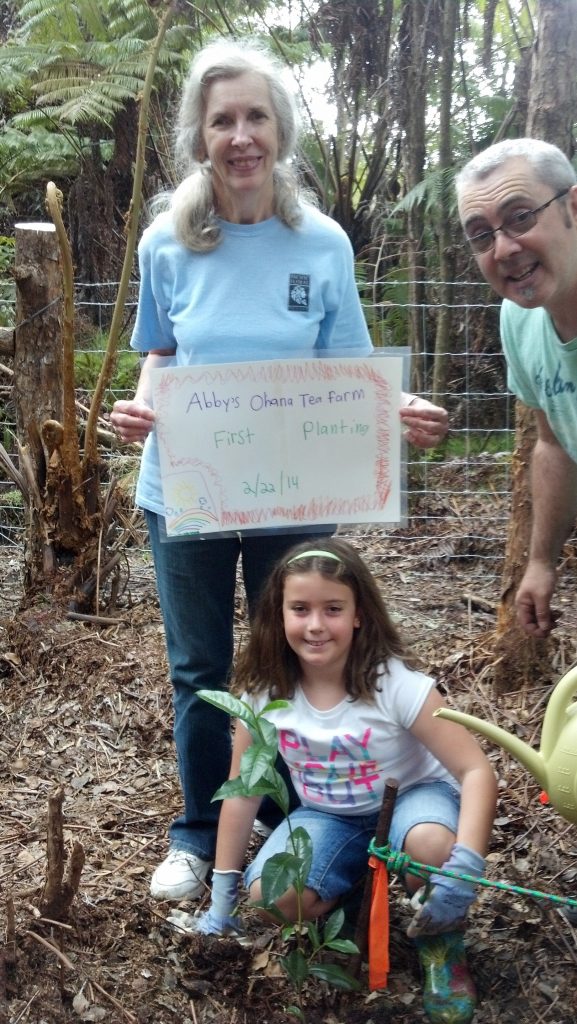

Therefore, we raise our teacups to you and wish you the enjoyment we have had growing, processing and drinking our teas. From Abby’s Ohana to your Ohana. Cheers, Slainte, Salut and much Aloha.
So, now…
WE ARE A TEA FAMILY
We give a little of ourselves in each tea plant.
OUR FAMILY
Meet Ronald, Lisa, and daugther, Abby.
Ronald is a tea grower, cultivating the volcanic soil, growing and pruning the tea cultivars, picking the tea as it flushes and processing the flush “by hand” to bring you the finest quality tea.
Lisa, a research plant pathologist, spends time at the farm when she can and loves sipping the tea that her husband makes (Kīlauea Beauty
is her favorite).
Abby loves helping her father on the farm, helping her mom in the laboratory and having fun with her friends. She especially loves cooking with locally grown produce and whipping up desserts that pair well with our tea.
OUR TEA FARM
Abby’s Ohana Tea farm is located on the Island of Hawai‘i (the “Big Island”) near Hawai‘i Volcanoes National Park at an elevation of 3600 feet in the only tropical rainforest in the United States.
Nearly all of our acreage is covered by five varieties of tea. Our other flora and fauna include the ‘Ōhi‘a trees, which we retained not only for their beauty and cultural significance to Hawai‘i, but also because the ‘Ōhi‘a trees provide shade for the tea plants.
The tea farm is also a biodiverse home for Hāpu‘u and Amaumau ferns, as well as clover and Hydrangea for Hawaiian honeybees.
Throughout the farm can be heard the song of the ‘Apapane and the occasional l’iwi (Hawaiian honeycreepers). High overhead swoops the l’o (Hawaiian hawk) and Nēnē (Hawaiian goose), while through the tea, roams families of Kalij pheasants.
Daily high temperatures sit comfortably between 70°F and 80°F year-round, while trade winds shower bathe the tea in a daily rain.
Along with the mildly acidic fertile soil, we have the most idyllic conditions for Camillia sinensis to not only grow, but to thrive.
OUR PLANTS
Our teas have a distinct pedigree that can be traced to Taiwan and to Assam.
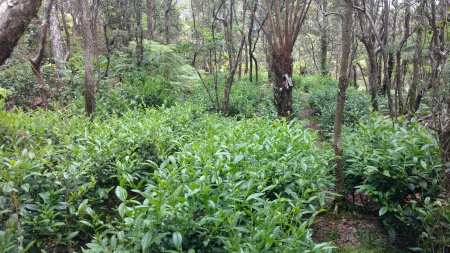
We did not rely on seeds that can produce tea plants of unknown vigor and quality. Instead we used clonal rootstock to begin our tea bushes, thus guaranteeing the quality of the tea produced. The tea we selected to grow in Volcano is tea of the highest quality, assessed by experts in Hawai‘i to produce a leaf with the qualities desired by discerning tea drinkers the world over. Our ‘Benikaori’ and ‘Yutaka midori’ plants are used to make our green tea. Our ‘Bohea’ and ‘Assamica’ plants are used to make our black tea. Our ‘Chin-Shin’ plants are used to produce our small batch oolong.
Why Do They Grow Well in Hawai'i?
Hawai’i tea is unique and delicious. Hawai’i offers a combination of weather, soil and elevation which come together in perfect harmony to allow the tea to thrive. Our tea is grown on the Big Island where it benefits from a unique terroir, nutrient-rich volcanic soil and a tropical climate. All together, this creates unique flavors.
Abby’s Ohana Tea grows at an elevation of 3600′ on the southern slopes of the Mauna Loa volcano. The high elevation of this area allows for a much cooler environment than the coastal areas, which means the tea leaves mature much more slowly. The soil is acidic, has good drainage which is ideal for the tea plants, and is also filled with nutrients that are perfect for optimal plant growth.
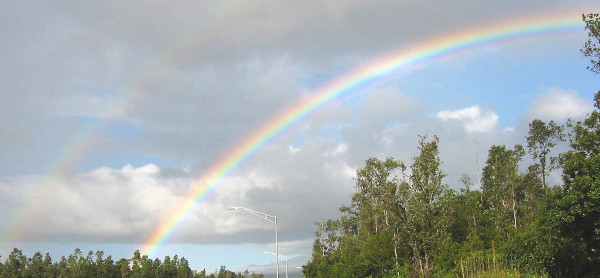
HAND PICKED – HAND PROCESSED
We pride ourselves in only serving the best to the customers of Abby’s Ohana Tea. The tea you drink is made from the top bud and two leaves of the tea plant, creating a superior, premium flavor. The leaves are then processed in small batches.
Our green tea is steamed and slowly pan dried while being rolled, allowing a tight curl to be imparted on the leaves while removing moisture, developing a fuller flavor.
Our black teas are withered overnight to a moisture content of 70%. They are then rolled, oxidized, and dried to bring out the floral notes of Plumeria and Jasmine, the sweet notes of honey, and the woody tones of ‘Ōhi‘a lehua.
